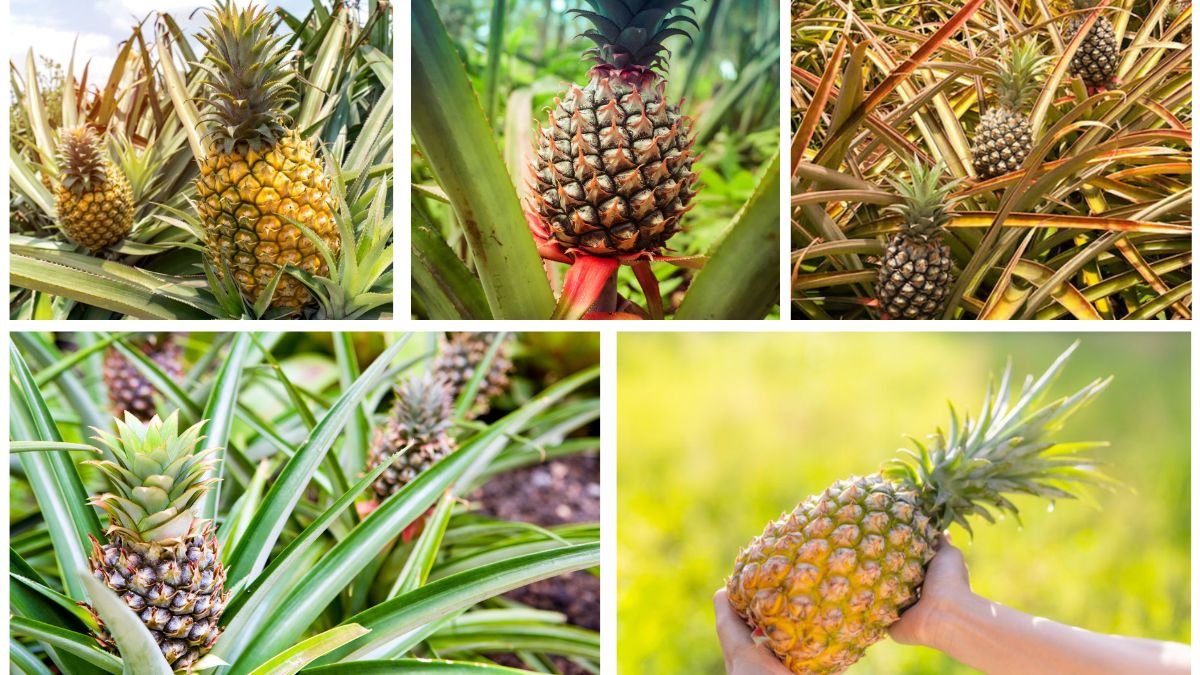Pineapples are among the most fascinating fruits to grow at home. Their sweet, tropical flavor and striking appearance make them a favorite in kitchens and gardens alike. Unlike many fruits that grow on trees, pineapples grow close to the ground on a unique spiky-leaved plant. The best part? You don’t need to be a professional gardener to grow one. With the right guidance and patience, anyone can cultivate a pineapple plant at home.
This step-by-step beginner’s guide will walk you through everything you need to know—from choosing your pineapple to harvesting your very own fruit.
Why Grow Pineapples at Home?
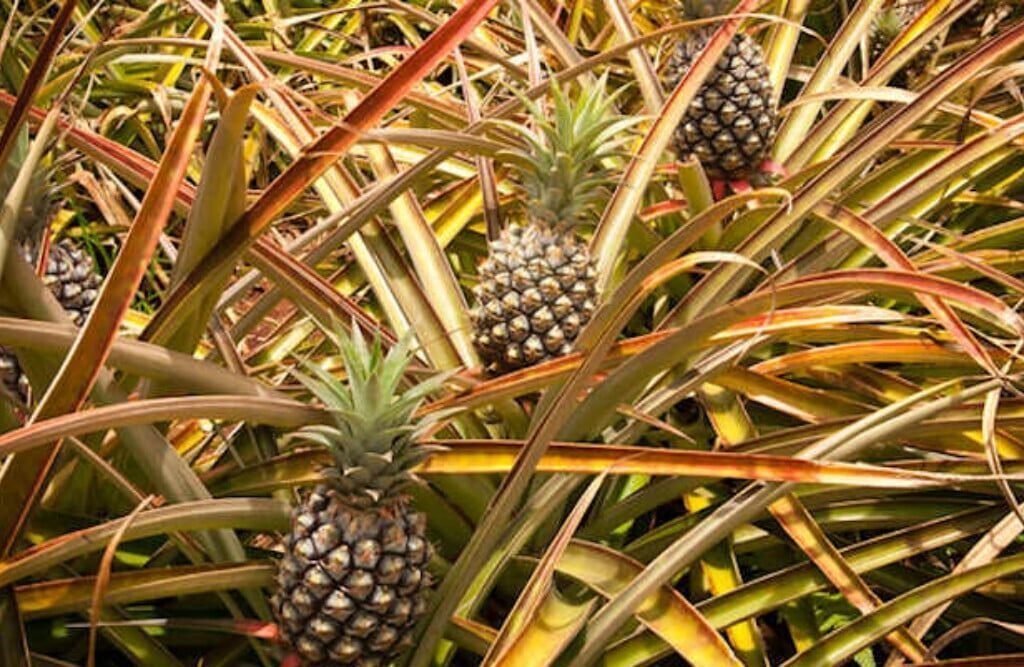
Growing pineapples at home isn’t just about having access to fresh, juicy fruit. There are several benefits:
- Aesthetic appeal – The plant itself is stunning, with long sword-like leaves that bring a tropical vibe to any space.
- Low maintenance – Pineapples are hardy plants that require minimal care compared to other fruiting plants.
- Cost-effective – A single store-bought pineapple can give you a new plant for free.
- Fun gardening project – Watching a pineapple plant mature and eventually produce fruit is rewarding for gardeners of all levels.
Step 1: Choosing the Right Pineapple
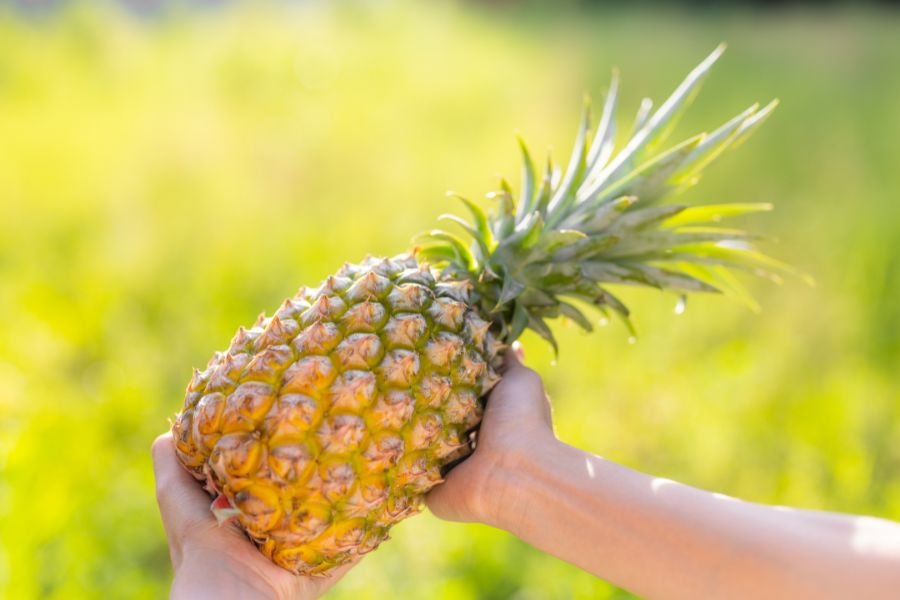
The first step to growing a pineapple at home begins at the grocery store or market. When selecting a pineapple:
- Look for a healthy green crown (the leafy top). Avoid crowns that are brown, wilted, or too dry.
- Ensure the fruit is ripe but firm. Soft or overripe pineapples may not produce a strong crown for planting.
- Check that the base of the leaves isn’t damaged or moldy.
Once you’ve found the right pineapple, enjoy the fruit and save the crown for planting.
Step 2: Preparing the Pineapple Crown
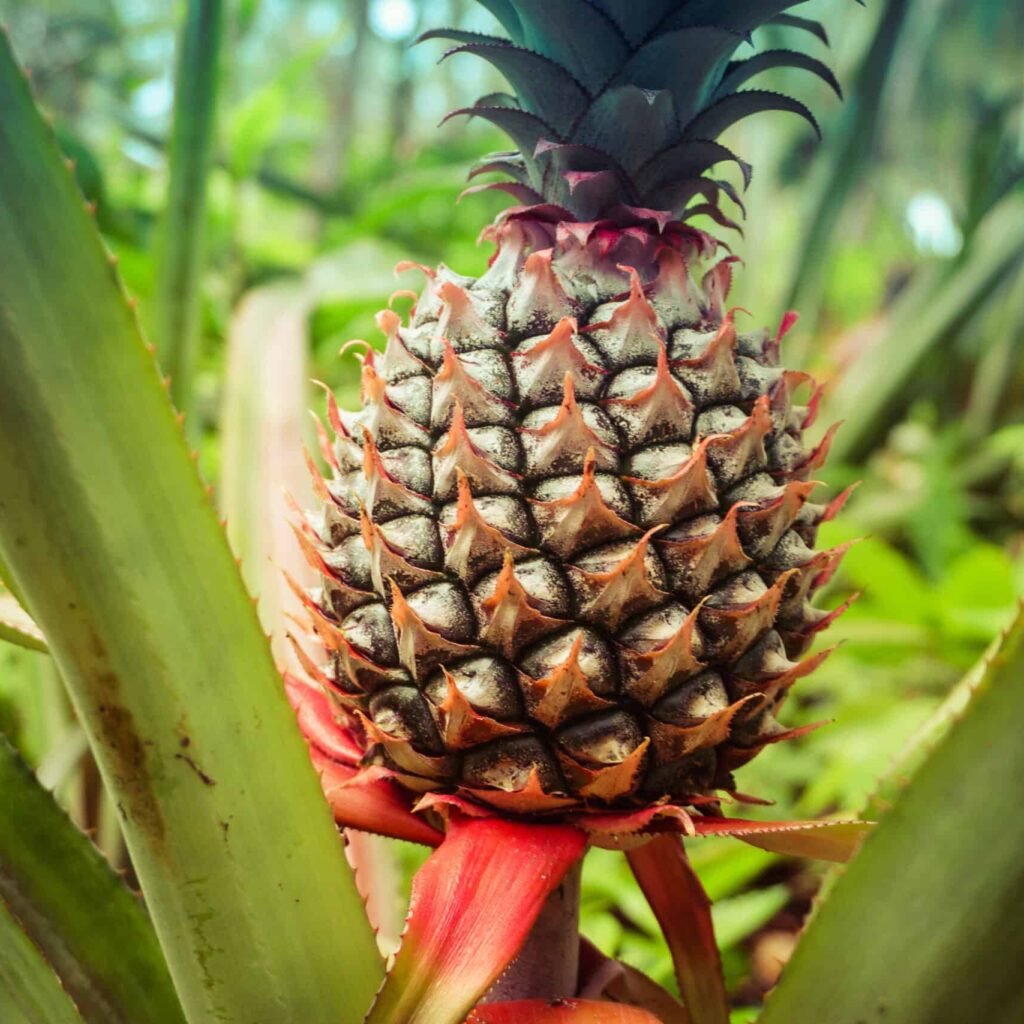
The crown is the leafy top of the pineapple and will serve as the start of your new plant. Here’s how to prepare it:
- Remove the crown – Firmly twist the leafy top from the fruit. If twisting is difficult, cut the crown with about an inch of fruit attached.
- Trim away excess fruit – Cut off any remaining pineapple flesh to prevent rotting.
- Peel lower leaves – Remove about 1 inch of the bottom leaves to expose the stem. This is where roots will grow.
- Dry the crown – Let it sit in a dry, shaded area for 2–3 days. This helps prevent rot when planted.
Step 3: Rooting the Pineapple Crown
You can root your pineapple crown in either water or soil, depending on preference.
Rooting in Water:
- Place the crown in a glass of water, ensuring only the bottom stem is submerged (not the leaves).
- Keep the glass in a sunny spot and change the water every 2–3 days.
- Within 2–3 weeks, small white roots should appear.
Rooting in Soil:
- Plant the crown directly into a small pot with well-draining soil.
- Water lightly and place it in a bright, warm spot.
- Roots will develop in 2–4 weeks.
Step 4: Transplanting into a Larger Pot
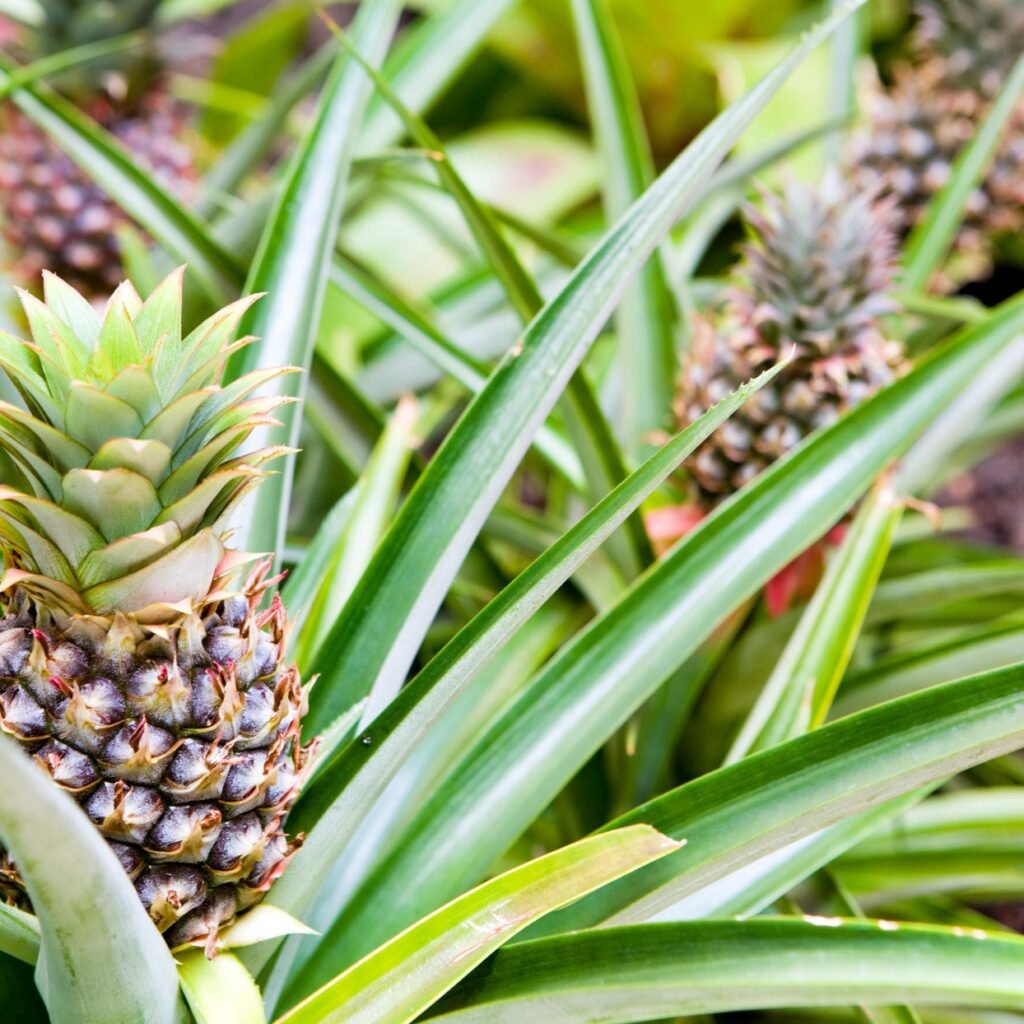
Once the crown has grown roots, it’s time to transplant:
- Choose a pot at least 12 inches wide and deep to give roots space to grow.
- Use a sandy, well-draining soil mix (a cactus or succulent mix works well).
- Plant the crown about 2 inches deep, firming the soil around the base.
- Water lightly after planting.
Step 5: Providing the Right Growing Conditions
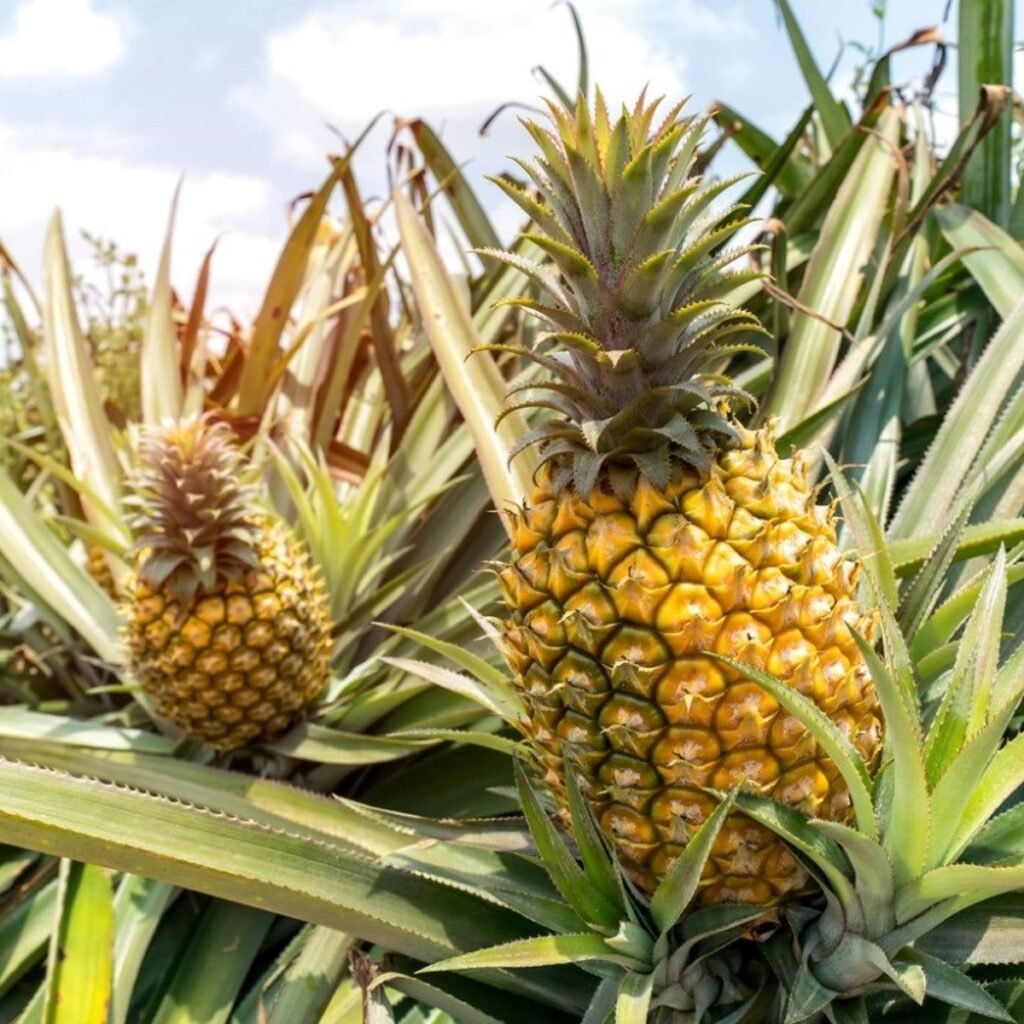
Pineapples are tropical plants, so replicating their natural conditions is key:
- Light: Pineapples need 6–8 hours of bright sunlight daily. Place your plant outdoors in warm weather or near a sunny window indoors.
- Temperature: Ideal temperatures range between 65–95°F (18–35°C). Protect the plant from frost or extreme cold.
- Watering: Water the soil lightly when the top inch feels dry. Avoid overwatering, as pineapples dislike soggy soil.
- Humidity: Moderate humidity works best, but the plant adapts well to indoor air.
Step 6: Caring for Your Pineapple Plant
To ensure healthy growth:
- Fertilizing – Feed with a balanced liquid fertilizer every 6–8 weeks during spring and summer. Pineapples love nitrogen-rich fertilizers.
- Pruning – Remove any dead or yellowing leaves to encourage growth.
- Repotting – If the plant outgrows its pot, transfer it to a larger container with fresh soil.
Pineapples are slow growers, so patience is essential. It can take 18–24 months before your plant produces fruit.
Step 7: Encouraging Flowering and Fruiting
A pineapple plant produces only one fruit per plant. Once it flowers, the fruit develops in about 6 months. To encourage flowering:
- Some gardeners place a ripe apple near the plant and cover it with a plastic bag for a week. Apples release ethylene gas, which stimulates flowering.
- Alternatively, sprinkle a teaspoon of powdered calcium carbide on the soil and water lightly. This also triggers blooming.
Step 8: Harvesting Your Pineapple
Your pineapple is ready for harvest when:
- The fruit turns golden-yellow at the base.
- It emits a sweet, tropical aroma.
- The fruit feels firm but slightly soft to the touch.
To harvest, twist the fruit from the stem or cut it with a sharp knife.
Step 9: Propagating New Pineapple Plants
The fun doesn’t stop at one pineapple. After harvesting, you can grow more plants from:
- Suckers – Small shoots that appear at the base of the plant.
- Slips – Shoots that grow near the fruit.
- Crown of the harvested fruit – Just like your first plant.
Each of these can be replanted to grow new pineapples.
Common Problems and Solutions
- Leaves turning brown – Usually caused by overwatering or cold exposure. Adjust watering and ensure warmth.
- Slow growth – Pineapples are naturally slow growers, but insufficient light or nutrients may also slow progress.
- Root rot – Avoid waterlogged soil and always use well-draining soil.
- No fruiting – Sometimes, pineapples take longer than expected. Try the apple ethylene method to stimulate flowering.
Fun Facts About Pineapples
- Pineapples are not a single fruit but a cluster of berries fused together.
- Each plant produces only one fruit at a time.
- Despite their tropical origins, pineapples can grow indoors in almost any climate.
- The name “pineapple” comes from early explorers who thought the fruit resembled a pine cone.
Final Thoughts
Growing a pineapple plant at home is a rewarding and enjoyable experience. From choosing a healthy crown to finally tasting the fruit you nurtured, the process is as educational as it is delicious. While it requires patience—sometimes up to two years—the payoff is worth it. You’ll not only enjoy a fresh, homegrown pineapple but also have a striking tropical plant to decorate your space.
So next time you enjoy a store-bought pineapple, don’t throw away the crown—plant it, nurture it, and soon you’ll have your very own tropical harvest right at home.
